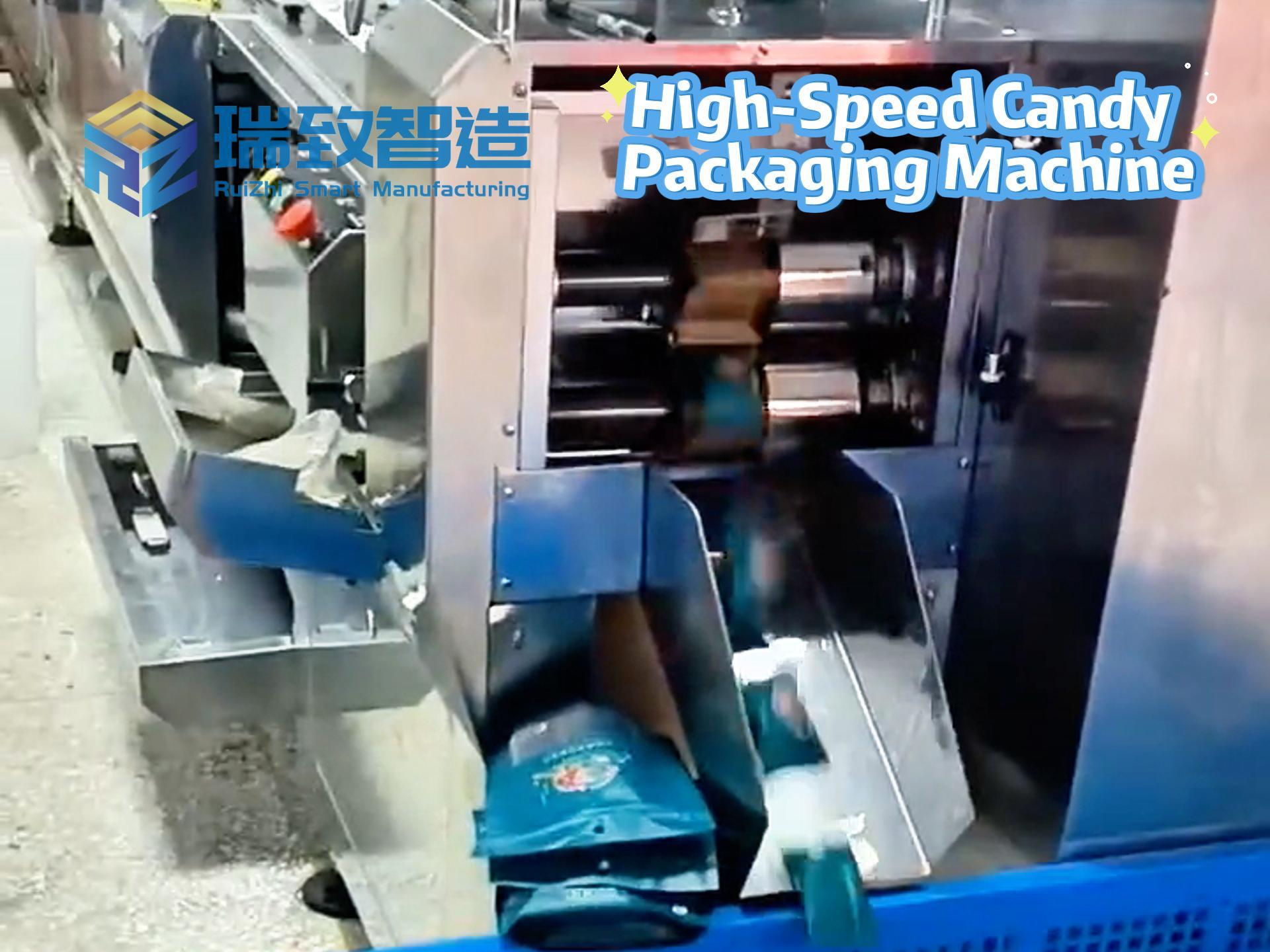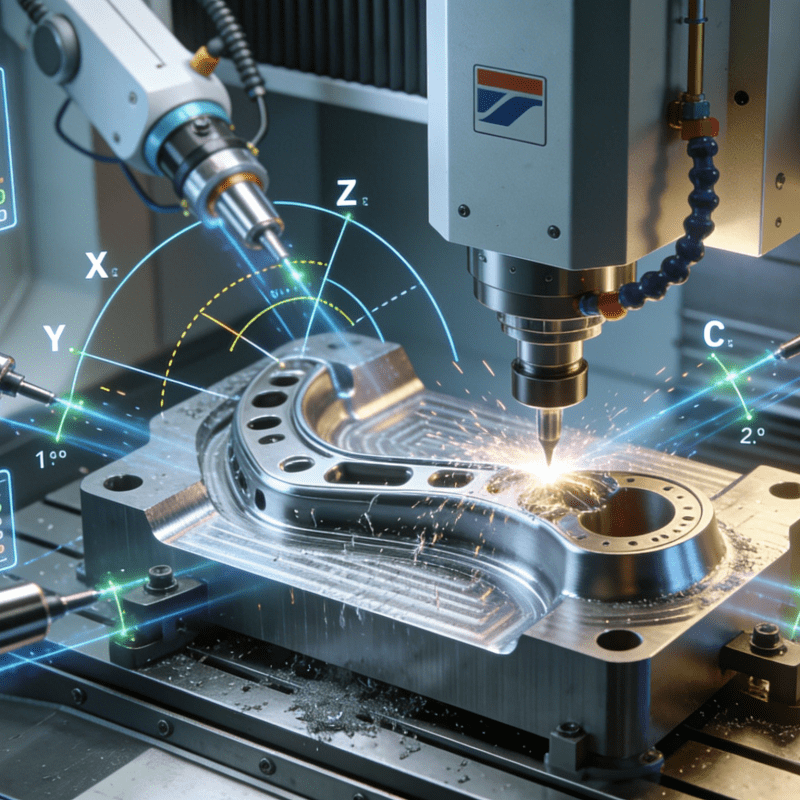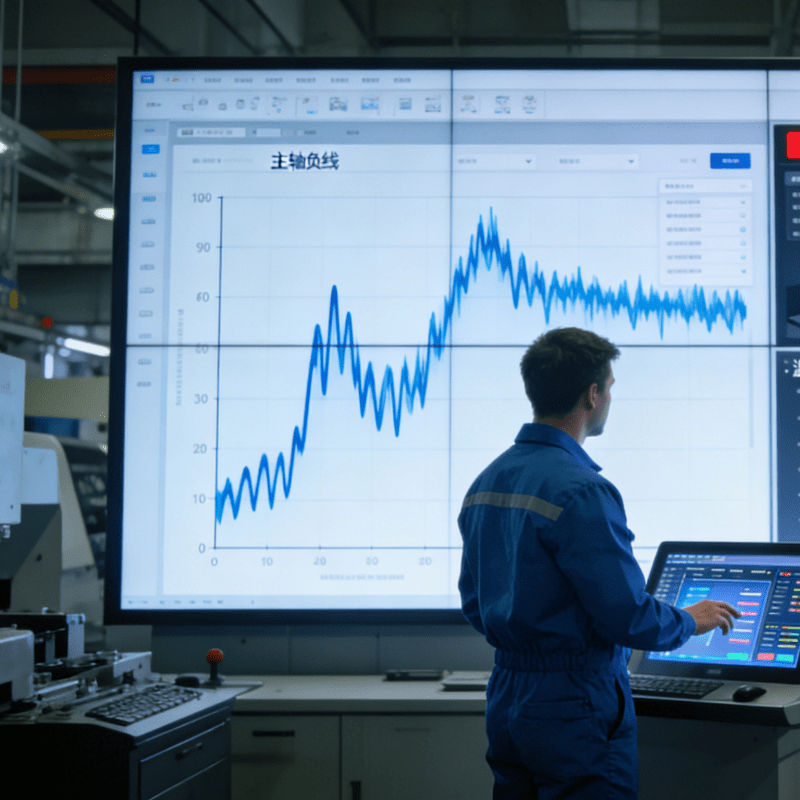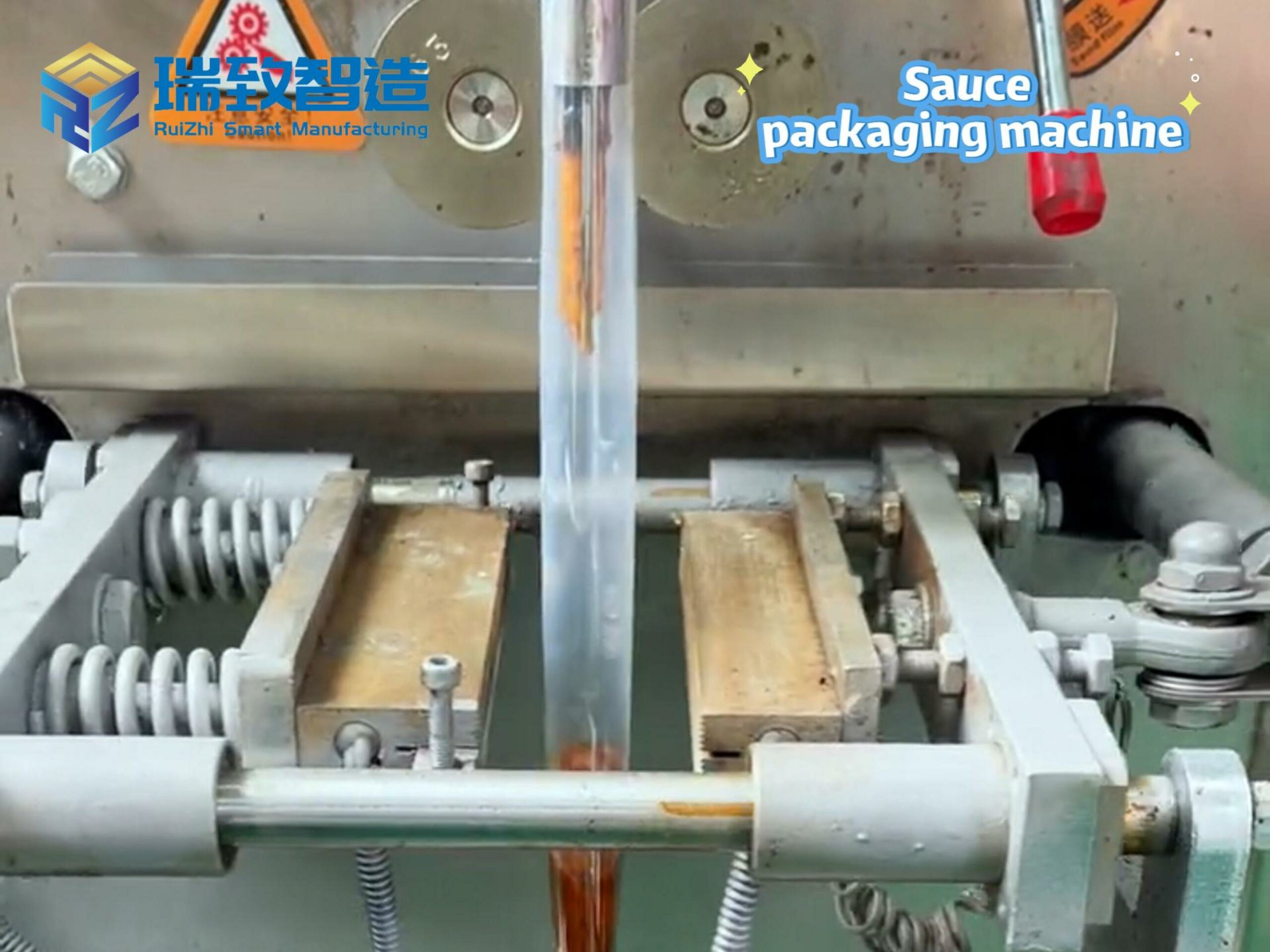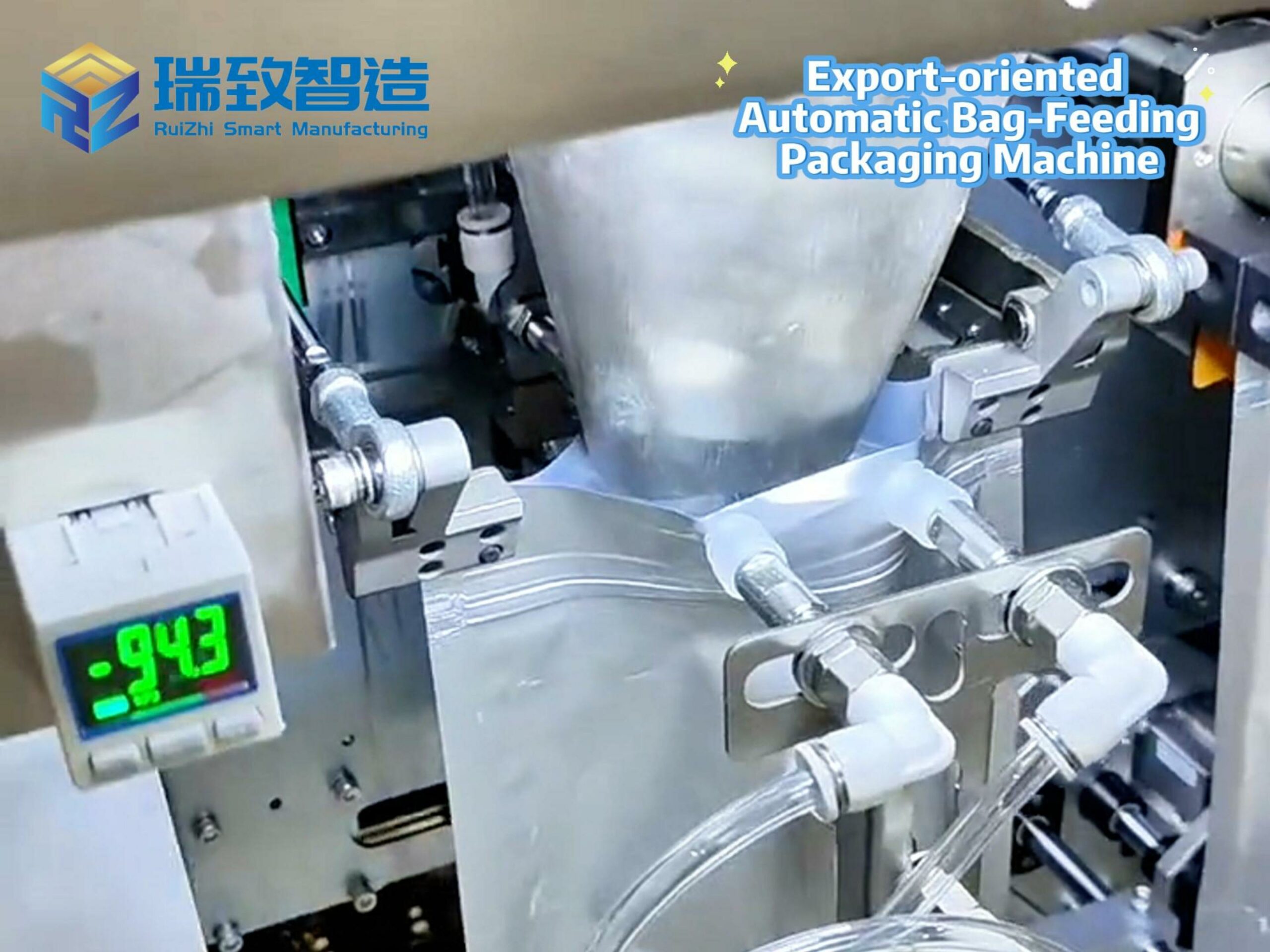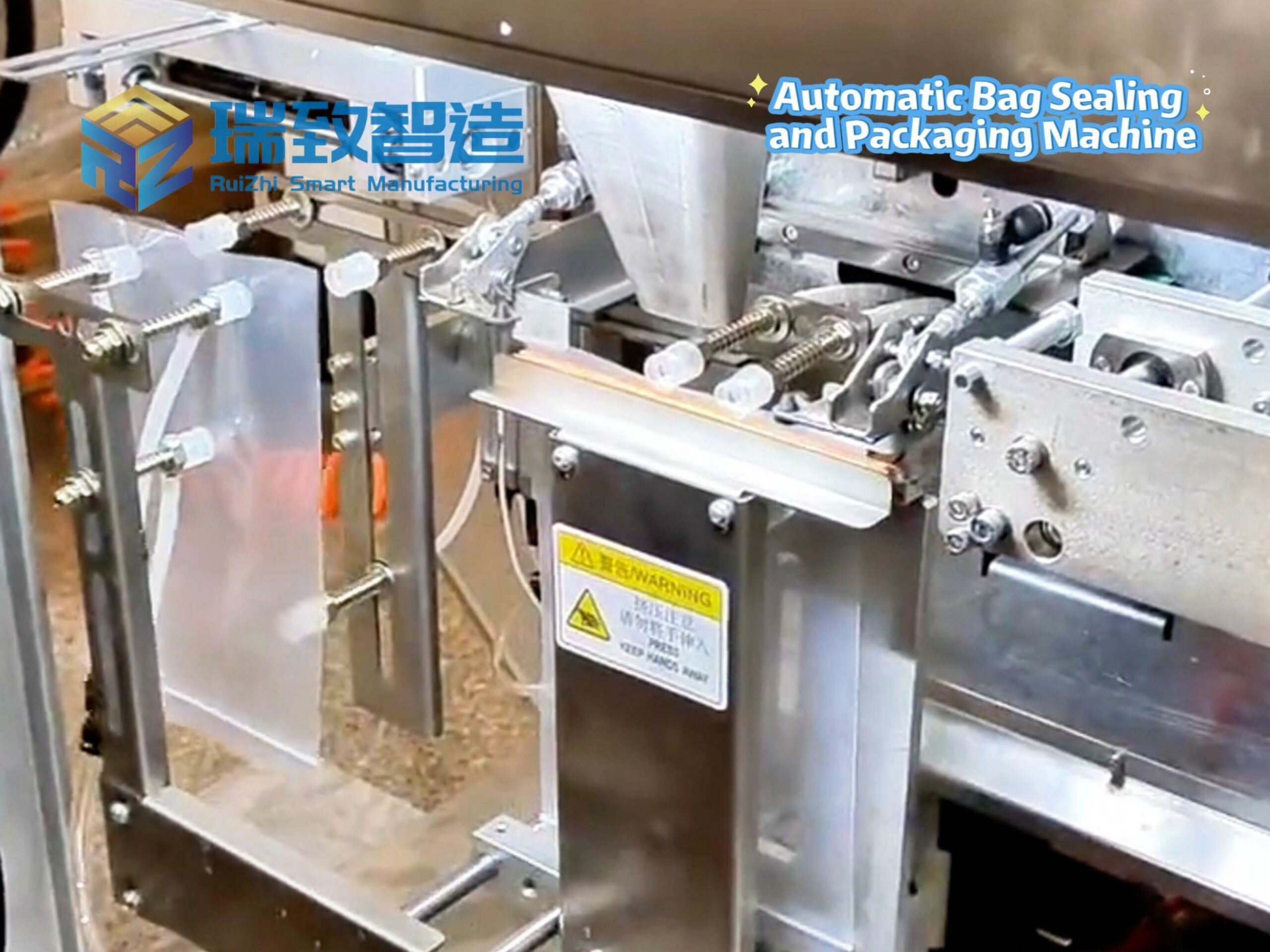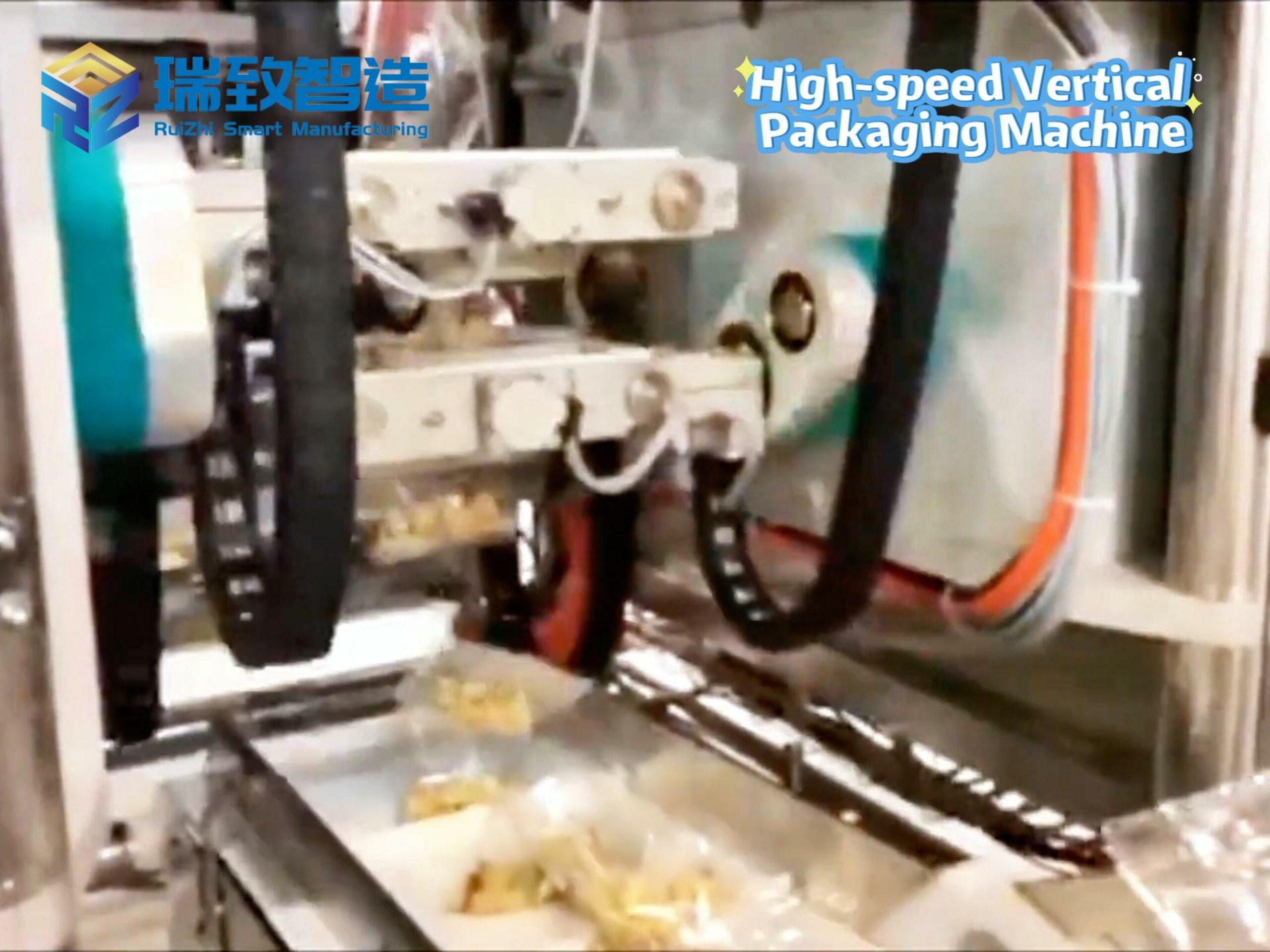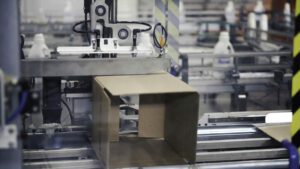
In industries relying on bulk material processing such as food processing, pharmaceutical production, and electronic manufacturing, the “material arranging-packaging” link has long faced the dilemma of “difficulty in balancing efficiency and precision”: bulk materials (such as candies, capsules, and electronic components) need to be neatly arranged in a fixed posture first, followed by processes like metering, bagging, and sealing. Traditional manual or semi-automatic equipment not only easily causes packaging errors due to material mixing and disorderly arrangement but also struggles to meet the needs of multi-specification and high-frequency product changeovers. The emergence of Automatic Material Arranging and Packaging Equipment, with full-process automation featuring “dynamic material arranging + intelligent packaging + data linkage”, has become an “efficiency hub” connecting material storage and end production, redefining material processing standards in modern manufacturing.
From “Manual Sorting” to “Machine Coordination”: Three Breakthroughs in Core Functions
The core value of automatic material arranging and packaging equipment lies in transforming the entire chain of “material organizing – precise metering – flexible packaging” into a closed-loop intelligent system. Its working logic revolves around three core functions, completely solving the pain points of traditional material processing:
Dynamic Material Arranging: Intelligent Sorting to Transform “Disorder” into “Order”
The biggest challenge of bulk materials is their diverse forms—spherical candies are easy to roll, irregular electronic components are hard to position, and fragile capsules are prone to extrusion. The equipment achieves dynamic material arranging through a combination of “vibratory bowl + visual sorting + flexible conveyor belt”: the vibratory bowl disperses and initially orients materials through high-frequency micro-vibration (amplitude can be precise to 0.1mm) (e.g., conveying capsules in a direction with consistent axes); the visual system (equipped with a 20-megapixel industrial camera) real-time identifies material postures (e.g., judging the orientation of component pins), uses AI algorithms to eliminate deformed or unqualified products, and guides pneumatic push rods to straighten misaligned materials; the flexible conveyor belt (surface covered with food-grade silicone or anti-static coating) adjusts the conveying speed (adjustable from 0.5-3m/s) according to material characteristics to ensure uniform arrangement spacing (error ≤0.5mm). For example, in a chocolate bean packaging line, the equipment can arrange 500 8mm-diameter beans in “single-layer tight alignment” within 1 minute, which is 8 times more efficient than manual sorting.
Precise Metering and Flexible Packaging: “Customized Output” for Multi-Specification
Different industries have significantly different packaging requirements: the food industry requires metering precise to the gram (e.g., 200g±1g per bag of candies), the pharmaceutical industry demands absolute accuracy in the number of items per bag (e.g., 10 capsules per bag), and the electronics industry needs anti-static packaging (to avoid component damage). The equipment achieves flexible adaptation through “multi-dimensional metering system + modular packaging mechanism”: the metering link adopts “weighing sensor + visual counting” double verification (accuracy up to 0.1g or 1 piece) to ensure multi-specification materials (e.g., mixed-flavor candies) are distributed in preset proportions; the packaging link supports quick changeover—adjusting bag sizes (from 5cm to 30cm) through magnetic mold replacement, combined with various sealing methods such as heat sealing, cold sealing, and vacuum sealing, adapting to different materials like plastic film, aluminum foil, and kraft paper. A case from a pharmaceutical factory shows that the equipment can complete the changeover from “10-caplet blister packaging” to “50-caplet bottle packaging” within 15 minutes, which is 75% more efficient than traditional equipment (requiring 1 hour of adjustment).
Full-Process Traceability: Visual Management of Material Data
Quality traceability in traditional packaging links often fails due to data gaps, while the industrial IoT module built into automatic material arranging and packaging equipment can real-time record key data: material batches, material arranging speed, packaging metering errors, equipment operating parameters, etc., which are synchronously uploaded to the MES system, forming a complete data chain of “material – packaging – traceability”. When detecting that the packaging metering deviation of a certain batch exceeds the threshold (e.g., preset ±1g, actual ±3g), the system will automatically shut down and push the abnormal cause (e.g., uneven material distribution due to abnormal vibratory bowl amplitude) for quick troubleshooting. In health product production, this traceability capability enables “each bag of products to correspond to a unique traceability code”, allowing consumers to scan the code to view material sources, packaging time, etc., significantly improving quality control transparency.
Technical Core: Three Innovations Supporting Efficient Operation
The “efficiency and precision” of automatic material arranging and packaging equipment stem from the collaborative innovation of underlying technologies, with three core technologies building differentiated competitiveness:
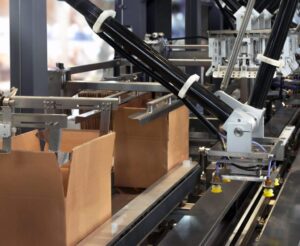
Millisecond-Level Collaboration Between Vision and Motion Control
Traditional material arranging equipment often causes sorting errors due to “visual recognition lagging behind material movement”, while the new-generation equipment adopts a “high-speed vision + real-time motion control” architecture: the vision system captures material images every 0.02 seconds, realizes parallel processing of image data through FPGA chips (Field-Programmable Gate Array), completes posture judgment and generates adjustment instructions within 0.05 seconds; the motion controller (response speed up to 1ms) synchronously drives executive components such as vibratory bowls, push rods, and conveyor belts, ensuring the closed-loop delay of “recognition – decision – execution” is ≤0.1 seconds. This collaborative capability enables the equipment to stably handle high-flow materials (e.g., small hardware parts at 1000 pieces per minute) with a sorting qualification rate maintained above 99.9%.
Flexible Transmission and Adaptive Adjustment Technology
For fragile materials (e.g., crispy biscuits, precision ceramic components), the equipment adopts a “servo motor + elastic buffer” transmission scheme: the bottom of the vibratory bowl is equipped with pressure sensors to real-time monitor material accumulation thickness, automatically adjust vibration force (steplessly adjustable from 5N to 50N) to avoid crushing caused by excessive vibration; the micro-airbag structure on the conveyor belt surface can automatically inflate according to material weight (e.g., inflating 0.2bar for electronic components under 1g to form flexible support), reducing friction damage. After application in a biscuit factory, the material breakage rate dropped from 8% (manual packaging) to below 0.5%.
Dynamic Optimization of Intelligent Scheduling Algorithms
The built-in “production scheduling model” of the equipment can automatically allocate resources according to order priority: when receiving orders for “100,000 bags of candies” and “10,000 bags of capsules” simultaneously, the algorithm prioritizes the small-batch, high-urgency capsule order, achieving rapid response by adjusting material arranging channels (switching to dedicated food-grade channels) and optimizing packaging parameters (enabling pharmaceutical-grade sealing temperature). Meanwhile, the algorithm learns historical data (e.g., optimal material arranging speed for different materials) to independently optimize operating parameters—for example, detecting that “candies are prone to sticking when humidity > 60%”, automatically reducing vibratory bowl amplitude and increasing conveyor belt speed to reduce material loss.
Scene Implementation: Industry-Specific Efficiency Revolution
In scenarios with different material characteristics, automatic material arranging and packaging equipment is releasing value through “customized solutions”:
Food Industry: “High Speed and Aesthetics Coexisting” in Snack Packaging
A snack food enterprise’s potato chip packaging line once faced two pain points: high packaging breakage rate due to fragile potato chips, and irregular manual arrangement affecting bag appearance. After introducing the equipment, potato chip collisions were reduced through “low-amplitude vibratory bowl (amplitude 0.3mm) + soft conveyor belt”, combined with the visual system to identify crumbs and automatically remove them, increasing the intact rate from 85% to 98%; meanwhile, the equipment arranges potato chips in “single-layer flat laying”, improving the neatness of packaged bags, significantly enhancing shelf display effect, and increasing product premium space by 10%.
Pharmaceutical Industry: “Zero Error Guarantee” in Capsule Packaging
In antibiotic capsule production, the metering accuracy of 10 capsules per bag is directly related to medication safety. Traditional manual counting is prone to overfilling or underfilling due to fatigue (error rate about 2%), while the equipment adopts “visual counting + weighing recheck” double control: the camera takes 0.01 seconds to identify each capsule, and the weighing sensor is precise to 0.01g, ensuring absolute accuracy in the number of items per bag; the packaging link uses sterile aluminum foil sealing (temperature controlled at 180℃±2℃) to avoid bacterial contamination. After application, the metering error rate dropped to 0.01%, and the audit efficiency for GMP certification increased by 30%.
Electronics Industry: “Anti-Static and Anti-Confusion” in Component Packaging
An electronic foundry needs to package 0603 (0.6mm long, 0.3mm wide) chip resistors. Traditional manual handling is prone to component loss due to electrostatic adsorption, and resistors with different resistance values are easily mixed. The equipment adopts an “anti-static material arranging channel (resistance < 10⁹Ω) + laser marking traceability” scheme: the visual system identifies color rings on resistor surfaces (to distinguish resistance values) and automatically diverts different specifications of components to corresponding packaging channels; the packaging film is covered with an anti-static coating, combined with ion fans to eliminate static electricity, reducing the component loss rate from 5% to below 0.1% and significantly reducing material waste.
Future Evolution: From “Equipment” to “Intelligent Material Hub”
With the deepening of Industry 4.0, automatic material arranging and packaging equipment is upgrading from an independent processing unit to a core node of the “intelligent factory material network”, and will show three trends in the future:
AI-Driven Self-Evolution Capability
By accumulating massive material processing data (e.g., optimal parameters for 100,000 types of materials), the equipment can independently generate a “material-scheme” matching model—when accessing new materials (e.g., irregular health product pills), the system automatically recommends processing parameters of similar materials (e.g., referencing the vibration frequency of spherical candies) and quickly iterates and optimizes through a small amount of trial production, shortening the debugging time for new materials from 2 hours to 15 minutes.
Green Energy-Saving and Sustainable Design
Adopting technologies such as “servo motor energy recovery” (recovering electrical energy during braking), adaptable degradable packaging films, and automatic waste material recovery channels, the equipment reduces energy consumption by 25% and packaging material waste by 40%, adapting to the “dual carbon” goals of the manufacturing industry.
Cross-Scene Collaborative Network
After accessing the industrial Internet platform, the equipment can link with upstream warehouse AGVs and downstream palletizing robots: adjust material arranging parameters in advance according to material outbound information from the warehouse system; after packaging, automatically send pallet specification data to palletizing robots, realizing full-process unmanned operation of “material arranging – packaging – palletizing” and increasing overall material turnover efficiency by 50%.
From candy arrangement in food workshops to capsule counting in pharmaceutical factories, the value of Automatic Material Arranging and Packaging Equipment has long gone beyond “replacing manual labor”. With “millimeter-level precision” and “second-level response”, it turns material processing from a “production bottleneck” into an “efficiency engine”. In the wave of intelligent manufacturing, such automated equipment focusing on “material flow details” is promoting the industry to advance towards higher efficiency, intelligence, and reliability through an “invisible revolution”.

